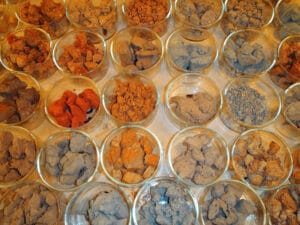Soil is a living body that tells a story. Once you break the surface, there is quite a bit to learn. Join three young soil scientists to learn the various physical and chemical properties of soil, what makes a soil “fertile,” its role in carbon sequestration, the importance of soil conservation, and the answer to the age-old question, “What’s the difference between soil and dirt?”
Jonathan Moy: Jonathan Moy is a soil conservationist with the Natural Resources Conservation Service in Dorchester County. He graduated from University of Maryland: College Park with a major in Ecological Technology Design and a minor in Soils. While at the University of Maryland, he competed with the soil judging team where he placed second in the Northeast regional competition in 2019.
Mary Gumerov: Graduating UMD in December with a degree in Environmental and Resource Economics and Soil Science. During their time at UMD, they were on the Soil Judging Team and they interned at the Agroecology Lab where they investigated saltwater intrusion on farmlands.
Dyani Frye: Expanding my breadth of soils knowledge from coast to coast! I am a 2019 UMD graduate currently working towards my M.S. in soil science at California Polytechnic University. Before coming to San Luis Obispo, I worked for USGS as a coastal wetlands research technician where I studied transgression of marshes into forested uplands. My current research involves using portable x-ray fluorescence spectroscopy to predict California soil properties.
The suggested donation for this event is $5. NHSM understands that the pandemic has adversely impacted many. It shouldn’t impact access to education. Therefore, a free option is also available.
Once registered, a confirmation email will contain a link to register via Zoom.
Follow this link to register: https://www.marylandnature.org/get-involved/events/event/deciphering-the-language-of-soils/
Please email Bronwyn at bstrong@marylandnature.org with any questions.
The Natural History Society of Maryland is a volunteer-led non-profit organization. Please consider donating or becoming a member of the Natural History Society of Maryland and visit www.marylandnature.org for more information.

